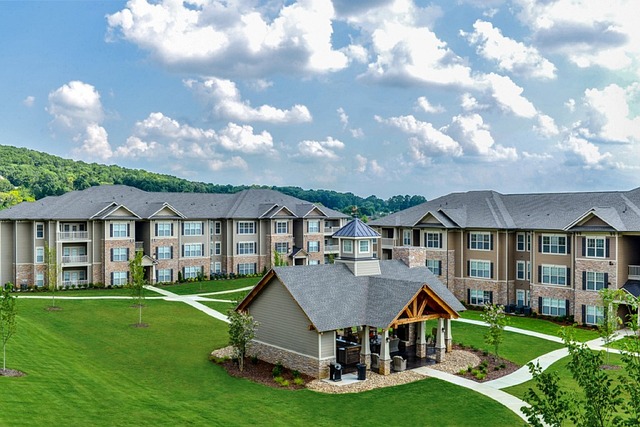How to Protect Your Home from Natural Disasters with Insurance in Singapore

Singapore is known for its tropical climate, urban density, and resilience against natural disasters. While the country is relatively safe from earthquakes and hurricanes compared to other regions, it is not immune to natural risks such as floods, landslides, and severe storms. With climate change increasing the frequency and intensity of extreme weather events, protecting your home with the right insurance coverage is more important than ever. This article explores how homeowners in Singapore can safeguard their properties from natural disasters through proper insurance planning.
Understanding Natural Disaster Risks in Singapore
While Singapore is geographically shielded from many catastrophic natural disasters, certain risks remain:
- Flooding:
Heavy rainfall during monsoon seasons or flash floods caused by drainage system overloads are common concerns. Low-lying areas, such as parts of Orchard Road and East Coast, are particularly vulnerable. - Landslides:
Steep terrain and soil erosion can lead to landslides, especially after prolonged rain. Areas like Bukit Timah and Sembawang are at higher risk. - Severe Storms:
Thunderstorms with strong winds and lightning strikes can cause damage to roofs, windows, and outdoor structures. - Rising Sea Levels:
As a low-lying island nation, Singapore faces long-term risks from rising sea levels due to climate change, which could impact coastal properties.
Each of these risks requires careful consideration when choosing home insurance.
Standard Home Insurance vs. Additional Coverage
Most standard home insurance policies in Singapore cover certain perils, such as fire, theft, and water damage from burst pipes. However, many natural disasters are excluded unless you purchase additional coverage. Here’s what you need to know:
What’s Typically Covered?
- Fire and Explosion: Damage caused by lightning strikes or electrical faults is usually covered.
- Water Damage (Limited): Burst pipes or accidental leaks may be included, but flood-related damage often requires additional coverage.
- Windstorm Damage: Some policies include protection against windstorms, but this varies by insurer.
What’s Not Covered?
- Floods: Overland flooding (water entering your home from heavy rain or overflowing drains) is typically excluded unless specifically added.
- Landslides: Damage caused by landslides is generally not covered under standard policies.
- Earthquakes: While rare in Singapore, earthquake coverage must be purchased separately if desired.
- Sea-Level Rise: Long-term environmental changes are not covered by home insurance.
To ensure comprehensive protection, you’ll likely need to enhance your policy with optional endorsements or specialized plans.
Steps to Protect Your Home with Insurance
Here’s how to prepare your home and secure adequate insurance coverage for natural disasters:
1. Assess Your Risk
Research the natural disaster risks in your area. Consider factors such as:
- Proximity to flood-prone zones (e.g., low-lying areas)
- Whether your property is near slopes or hills prone to landslides
- Historical weather patterns and government advisories
The Public Utilities Board (PUB) provides flood risk maps and resources to help homeowners assess their vulnerability.
2. Review Your Current Policy
Carefully examine your existing home insurance policy. Look for:
- Exclusions related to natural disasters
- Coverage limits for specific perils
- Deductibles for disaster-related claims
If your policy lacks sufficient coverage, contact your insurer to discuss adding endorsements or upgrading your plan.
3. Add Flood Insurance
Overland flood insurance is now available from some insurers in Singapore, particularly for high-risk areas. This coverage protects against water damage caused by heavy rain, overflowing drains, or flash floods. Note that basement flooding due to sewer backups may require separate coverage.
4. Purchase Landslide Insurance
If your home is located on or near sloped terrain, consider adding landslide coverage. While less common, this endorsement can provide peace of mind during prolonged rainy seasons.
5. Increase Your Coverage Limits
Ensure your policy provides enough coverage to rebuild your home and replace your belongings. Reassess the replacement cost of your home periodically, as construction costs can rise over time.
6. Bundle Policies for Savings
Some insurers offer discounts if you bundle home and auto insurance or add multiple endorsements. Take advantage of these savings while ensuring comprehensive protection.
7. Work with a Knowledgeable Broker
An experienced insurance broker can help you navigate complex policies and find the best coverage for your needs. They can also compare quotes from different providers to ensure competitive rates.
Additional Ways to Mitigate Risks
While insurance is critical, it’s only one part of protecting your home. Combine it with proactive measures to reduce your vulnerability to natural disasters:
- Flood Prevention:
- Install flood barriers or sandbags around your property.
- Elevate electrical systems and appliances above potential flood levels.
- Clear gutters and drains regularly to prevent water buildup.
- Storm Preparedness:
- Reinforce windows and doors with storm shutters or laminated glass.
- Secure outdoor furniture and equipment to prevent them from becoming projectiles during strong winds.
- Trim trees near your home to prevent falling branches.
- Landslide Safety:
- Ensure proper drainage systems are in place to divert water away from slopes.
- Avoid excavating or altering the natural landscape without professional guidance.
- Emergency Preparedness:
- Develop an evacuation plan and keep emergency supplies, such as food, water, and flashlights, readily available.
- Stay informed about weather alerts through apps like MyENV or the Meteorological Services Singapore (MSS).
Government Assistance Programs
In the event of a major disaster, the Singapore government provides support through agencies like the Public Utilities Board (PUB) and Civil Defence Emergency Management . For example:
- PUB offers flood mitigation measures and compensation schemes for affected households.
- The SGSecure initiative educates residents on emergency preparedness and response.
However, government aid is often limited and doesn’t replace the need for personal insurance. Relying solely on public assistance can leave you underinsured and financially vulnerable.



